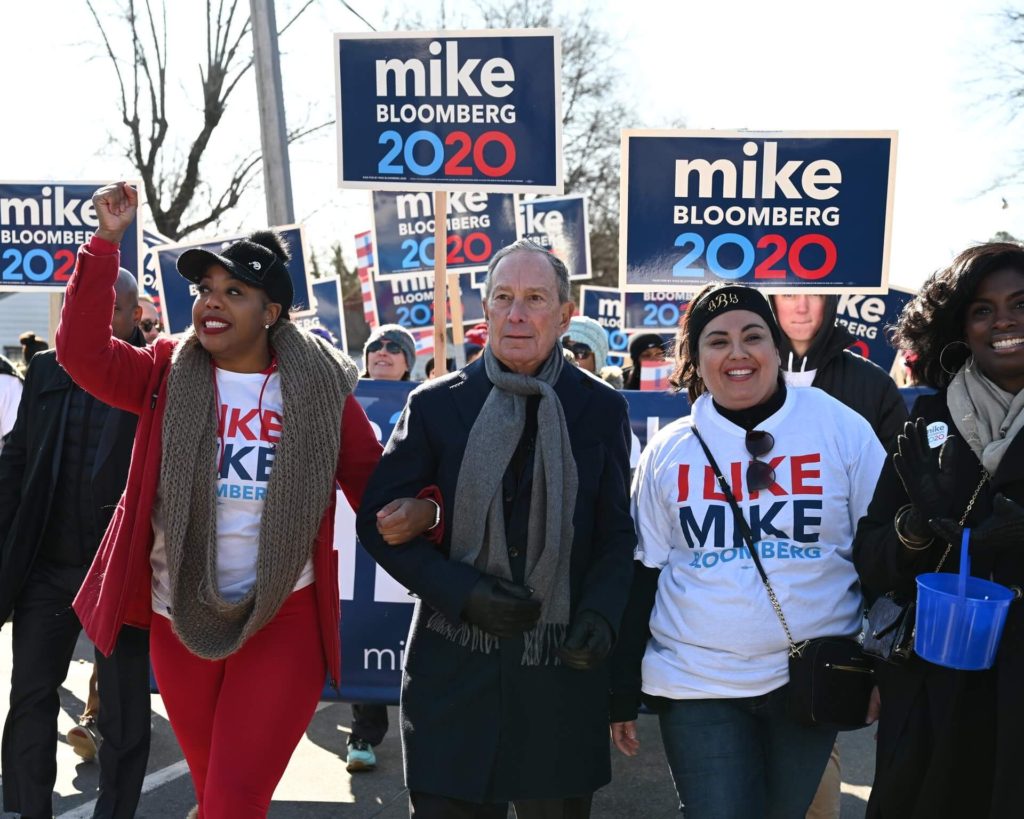As the race for the democratic presidential candidacy heats up, each candidate is making student loan reform a major component of their campaign. And former Mayor Michael Bloomberg has now joined the fray by unveiling his own student loan plan.
While other candidates have focused more on student loan forgiveness, Bloomberg’s student loan plan focuses on making community colleges more affordable and allocating more funds to Pell Grants for low-income students. In total, Michael Bloomberg’s student loan plan would cost the government over $700 billion.
Keep reading for a full breakdown of Michael Bloomberg’s student loan plan and its pros and cons.
Michael Bloomberg’s Student Loan Plan: 5 Key Points
Bloomberg’s full student loan policy is a 7-page document that can be read here. But if you’re looking for the Reader’s Digest version, here are five of the most important features you’ll want to know about.
1. Free 2-Year Community College Education for All
The first major piece of Bloomberg’s plan is a call for all public 2-year community colleges to become tuition free for all students. And, for the lowest-income students, food and room and board expenses would also be covered.
On the surface, free community college sounds like it could save students a lot of money and reduce student debt. But the reality is that community colleges are already the cheapest academic choice for students. Check out these recent stats from College Board.
| Type of School | Annual Tuition and Fees |
|---|---|
| Public Two-Year College (in-district students) | $3,440 |
| Public Four-Year College (in-state students) | $9,410 |
| Public Four-Year College (out-of-state students) | $23,890 |
| Private Four-Year College | $32,410 |
With these numbers in mind, it’s doubtful that a high percentage of American student debt is being taken out by community college students. But, nonetheless, for cost-conscious students who already plan to begin their college career at 2-year schools, Bloomberg’s plan could help them save even more.
2. Free 4-Year College Education for Low-Income Students
The second key feature of Bloomberg’s student loan plan would be to make 4-year degrees from public universities completely free for low-income students. To make this possible, Bloomberg has proposed an expansion to the Pell Grant program, increasing the maximum payout to $12,690.
This portion of Bloomberg’s plan has a bit more “meat” to it and could honestly make a big difference in the cost of education for needy students. However, Bloomberg’s “free college” plan is less bold than some of his Democratic rivals. For example, Senators Elizabeth Warren and Bernie Sanders have both proposed free tuition at public 4-year universities for all students regardless of income.
3. Lower Payments on Income-Driven Repayment Plans
Next, former Mayor Bloomberg has proposed a change to Income Driven Repayment (IDR) plans. Under his plan, payments would be reduced to 5% of a student’s discretionary income. On current IDR plans, student loan borrowers pay 10% to 20% of their discretionary incomes, depending on the plan they choose.
And that’s not the only IDR change that Bloomberg has suggested. He’s also called for all students to be automatically enrolled in Income-Driven Repayment (IDR) plans. Currently, students must apply to join an IDR plan at StudentAid.gov.
Notably, Bloomberg’s plan for IDR wouldn’t change how long it takes to qualify for forgiveness for most borrowers. Currently, the earliest that students can apply for student loan forgiveness is after 20 years of payments. Bloomberg’s student loan policy calls for a 20-year track to forgiveness as well.
However, under his plan, everyone would qualify for forgiveness on their undergraduate loans after 20 years. Under current policy, borrowers on the ICR plan and graduate degree borrowers on the REPAYE plan must wait 25 years before they’re eligible for student loan forgiveness.
4. Heavier Investment in Career Training Programs
Bloomberg says that he wants the United States to do a better job of developing our workforce. By 2030, he hopes that 1 million students will have enrolled in work-based degree and credential programs. His team also wants to work with states to introduce “Apprentice Programs” to provide training for in-demand careers.
Third, Bloomberg would like to triple the funding for the Federal Work Study Program. And, finally, Bloomberg’s student loan plan would double the funding for Perkins and WIOA Acts.
5. Increased Accountability for Academic Institutions
At the end of Bloomberg’s student loan plan, he brings up an important point. The federal government is currently spending over $120 billion per year on student aid. And America’s taxpayers deserve to know that their money is going to colleges that are training their students well.
To help promote transparency and accountability, Bloomberg wants to pass the College Transparency Act. This would allow the government to measure student earnings 3 to 5 years after graduation as well as other data points. This would allow for the government to identify low-quality schools and create plans for improvement.
How Does Bloomberg’s Student Loan Plan Compare to Other Presidential Candidates?
When compared to the plans of other Democratic primary candidates, it’s clear that Bloomberg is trying to strike a more moderate tone. Unlike Sanders and Warren, he’s not advocating for free college for all. And while both of those candidates are advocating for sweeping student loan forgiveness, Bloomberg’s plan would have little effect on current student loan borrowers.
In many ways, Bloomberg’s student loan position bears more resemblances to President Trump’s. Both candidates are trying to focus more attention on college affordability than student loan forgiveness. However, Bloomberg’s plan pledges to “fix” the Public Service Loan Forgiveness (PSLF) program, while President Trump has proposed to eliminate it.
Also, President Trump and former Mayor Bloomberg have different perspectives on IDR reform. Under Trump’s student loan plan, IDR payments would rise slightly to 12.5%, while Bloomberg wants to cut payments to 5%. However, under Trump’s proposal, borrowers would become eligible for student loan forgiveness in 15 years — 5 years sooner than Bloomberg’s plan.

